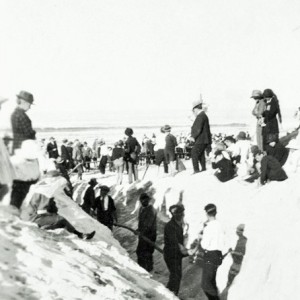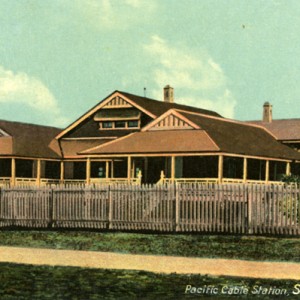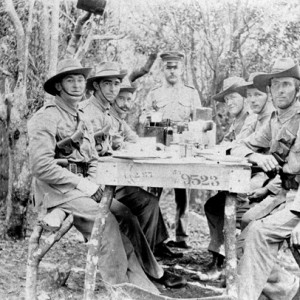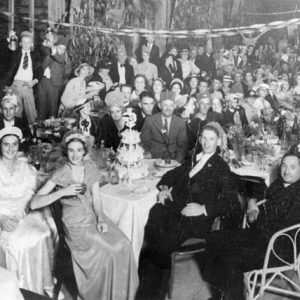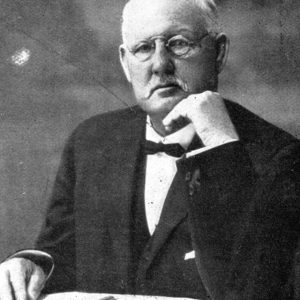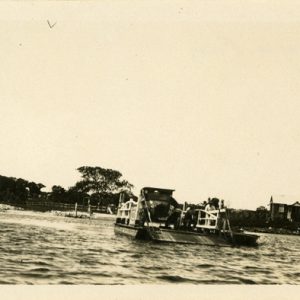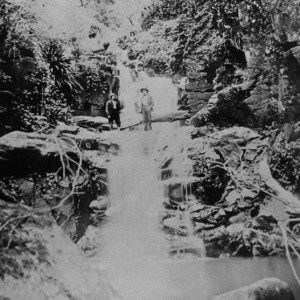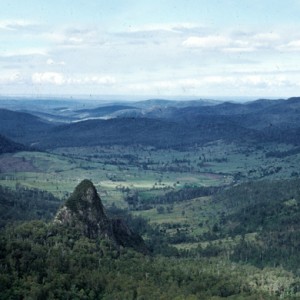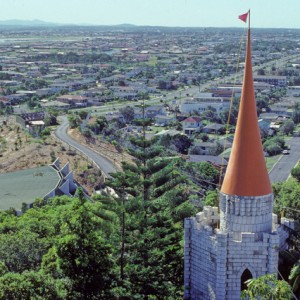
Until 1870, Australia’s only means of communication with the rest of the word was via vessels travelling the international shipping routes. With sea voyages that could last months, a more reliable and faster communication method was required and, in 1864, the Gutta-Percha Company and the cable makers Glass Elliot of Greenwich united to supply a submarine telegraph cable to span the Atlantic Ocean.
This venture was a success and a telegraphic cable between Canada and Australia was proposed with a possible route being suggested in 1899. The passing of the Pacific Cable Act in 1901 resulted in the British, Canadian, New Zealand and Australian Governments financing the cable from Vancouver via Fanning Island, Norfolk Island, Fiji and New Zealand to a final destination on mainland Australia at Southport in Queensland.
- Laying the Pacific Cable in a trench at Main Beach, 1902. Photographer unknown
- The Pacific Cable Station, Southport, circa 1920s. Photographer unknown
- Believed to be Cable Station Guards having tea, Southport, circa 1914. Photographer unknown
In 1902 the Colonia, a ship that was built especially for the project, commenced laying 3458 nautical miles of cable. At the time, it was believed to be the longest single length of cable in the world and took just under eighteen days to put in place.
The cost of laying the copper wire cored cable, protected by gutta percha wrapping, followed by twelve strands of steel armour wire, was £2,000,000. The cable was 2.2cm in diameter and was laid at depths of 3000 fathoms for most of the route.
On 8 March 1902 the Anglia arrived at Southport to bring the cable ashore just south of Main Beach. Upon reaching land, the cable was laid in a six foot deep trench that ran through sand dunes before crossing the Nerang River to terminate at the Cable Station in Bauer Street.
The station complex included a block of offices and staff quarters for 22 officers with a separate residence for the superintendent. This was cutting edge technology for the time and, in addition to its role as Australia’s cable station, it was also a training facility for officers who would later be relocated to other stations around the world.
The Cable Station was official opened on the 4 November 1902 and operated until 1962. One of the cable station buildings was relocated to The Southport School (TSS) and some of the telegraph equipment and samples of cable are held at Gold Coast Historical Society and Museum at Bundall.
The Pacific Cable technically ended at the Cable Hut in Main Beach near Narrow Neck where another internal cable was connected to cross the Nerang River to the Bauer Street receiving station.
In the first two decades of the 20th century Southport became the terminal for all Australian eastern seaboard telegraph calls from overseas. Officers would handle around 500 messages every weekday.
The original cable hut at Main Beach was severely affected by storms and erosion in 1950 and was rebuilt in 1951 at the same location. The hut was listed on the Queensland Heritage Register on 3 May 2007 and is located in Cable Park in Main Beach.
Sources of information and further reading
- Hughes, Angela. The Pacific Cable Centenary. 2002.
- “Southport Cable Station.” The Brisbane Courier (Qld. : 1864 – 1933) 12 Jun 1902, p. 4. http://nla.gov.au/nla.news-article19179833
- “The Pacific Cable.” Darling Downs Gazette (Qld. : 1881 – 1922) 4 Nov 1902, p. 3. http://nla.gov.au/nla.news-article184766727
- “The Pacific Cable.” The Brisbane Courier (Qld. : 1864 – 1933) 22 Feb 1904, p. 4. http://nla.gov.au/nla.news-article19266716
- https://en.wikipedia.org/wiki/Southport_Cable_Hut Accessed 6/01/2016
